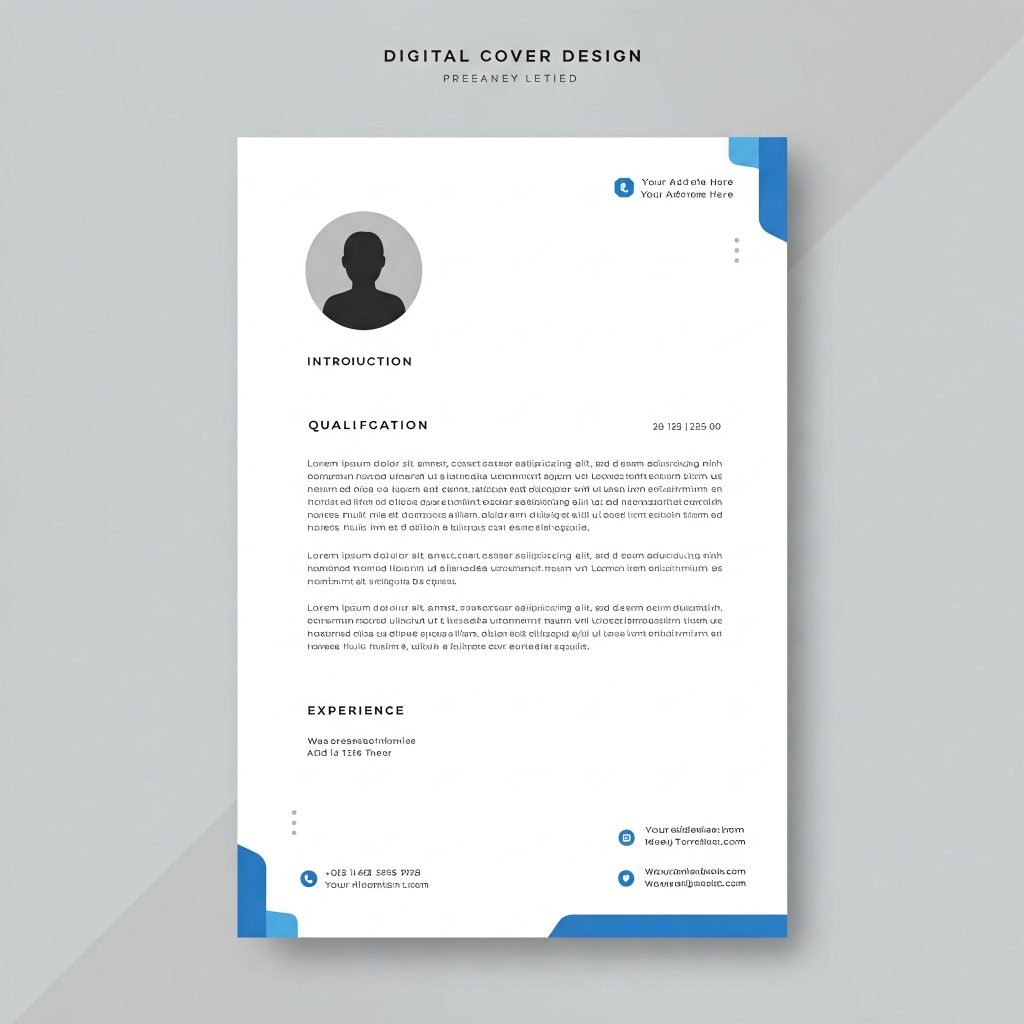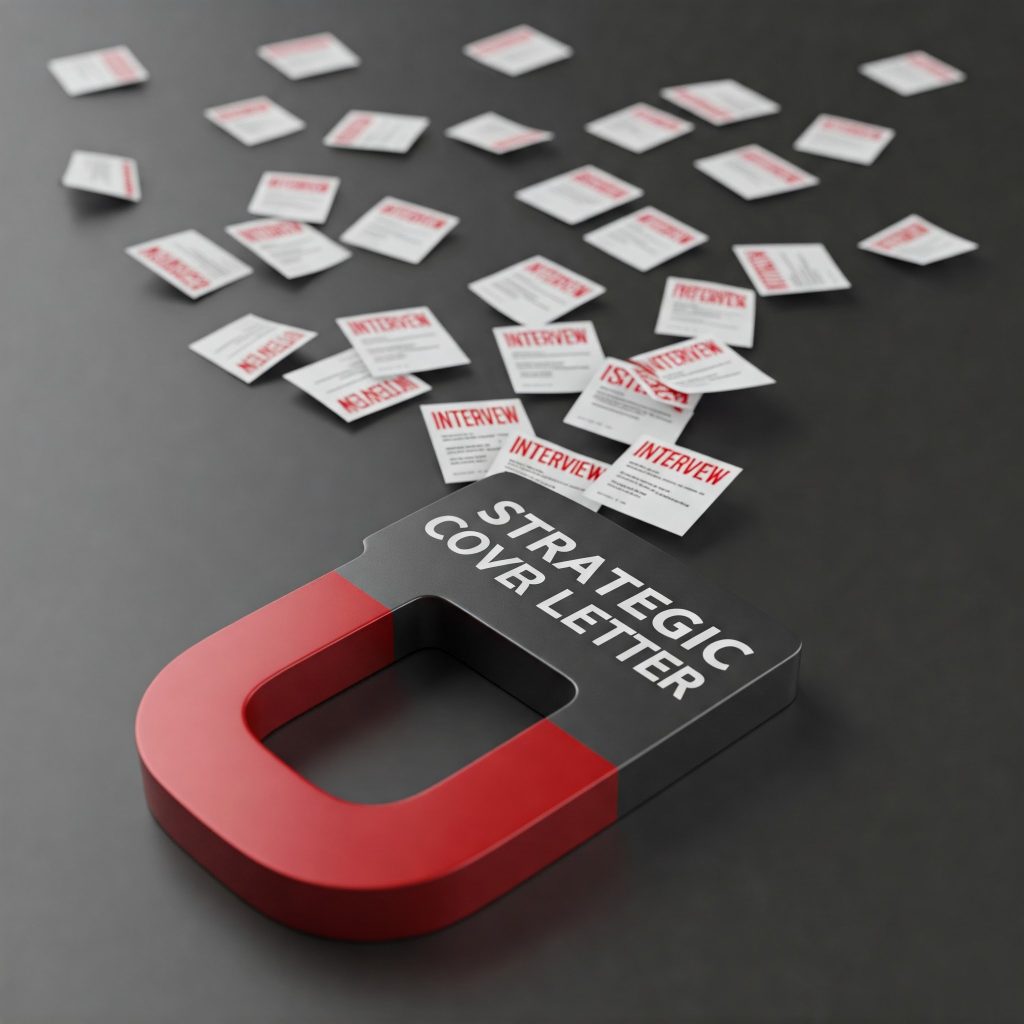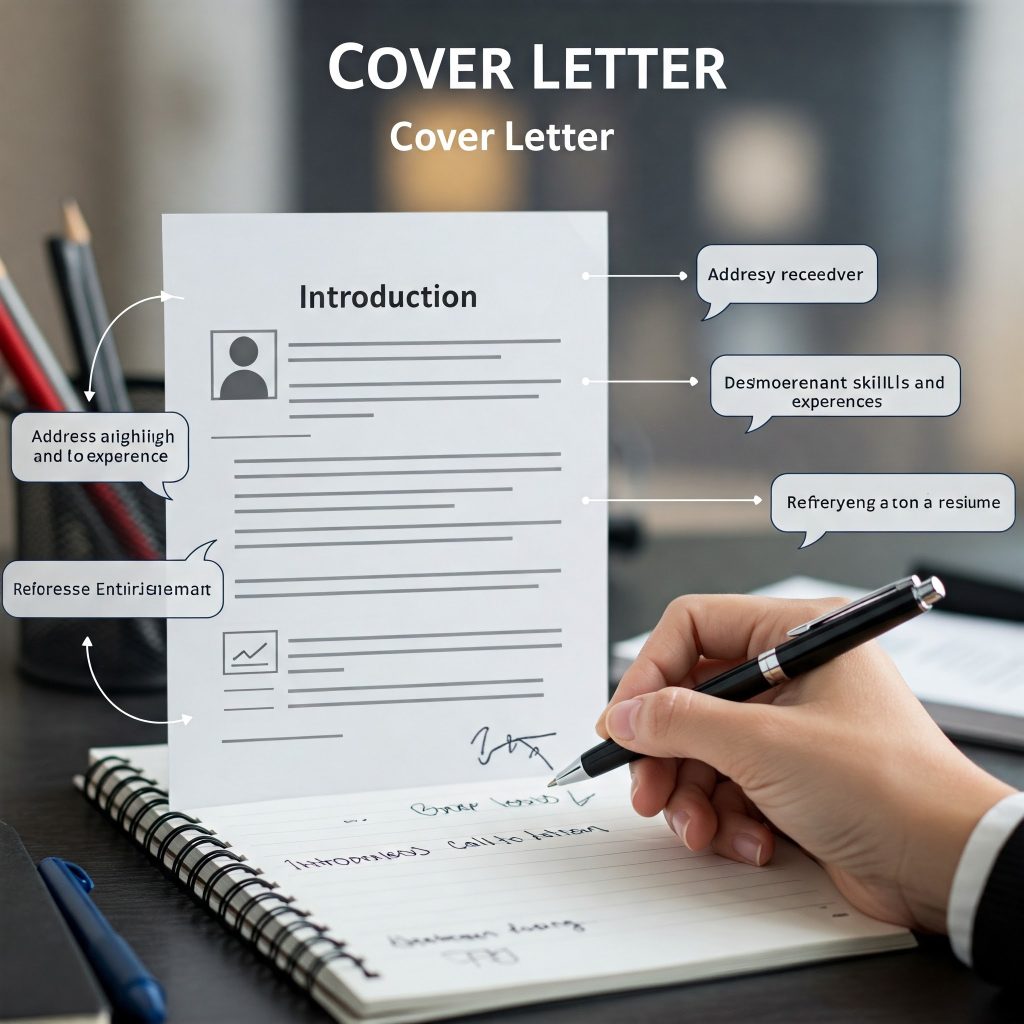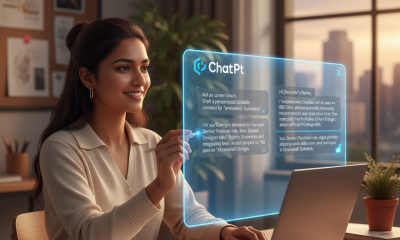Reverse Recruiting
Decoding the Cover Letter Dilemma: Worth It or a Waste of Time?

Unlocking More Interviews: The Surprising Power of a Strategic Cover Letter
Crafting a strategic cover letter is your surprisingly potent key to unlocking more interview opportunities. Ever feel like your resume is shouting into the void, lost in the endless stream of applications? You meticulously detail your skills and achievements, yet the silence from potential employers can be deafening. I’ve been there, staring at that often-ignored “Optional: Cover Letter” field, questioning its true value. But let me let you in on a secret: when crafted with intention, the cover letter isn’t a dusty relic; it’s a multiplier for your application’s effectiveness.
Beyond the Resume: The Strategic Advantage of a Cover Letter
Now, I know the common perception. “Cover letters? In this digital age? Aren’t they just a time-consuming formality that no one reads?” It’s a viewpoint I once held myself, picturing them languishing in some forgotten digital folder. However, through firsthand experience and observing countless successful job seekers, I’ve come to recognize the transformative impact of a strategic cover letter. It’s not about creating more work for yourself; it’s about creating more impact with your application. A well-crafted cover letter goes beyond the resume, offering a deeper, more nuanced presentation of your candidacy.

decoding the cover letter dilemma worth it or a waste of time
Forget those cookie-cutter, generic cover letters that simply echo the bullet points of your resume. You know the drill – the impersonal “Dear Hiring Manager” followed by a dry recitation of your work history. I’ve submitted my fair share of those, and the response was consistently… quiet. A truly strategic cover letter is a different animal entirely. Specifically, it’s a carefully tailored message, designed specifically for that particular role and that specific company. It’s about demonstrating, not just stating, why you are the ideal fit. Moreover, it allows you to connect with the employer on a personal level and showcase your understanding of their unique needs and challenges.
Have you ever felt like your resume, while factual, somehow misses the mark in conveying your genuine enthusiasm and potential? That’s precisely where the strategic cover letter shines. It provides the canvas to connect the dots between your past experiences and the employer’s future needs in a way that the structured format of a resume often restricts. In fact, think of it as the compelling narrative that breathes life into your resume, offering crucial context and highlighting your unique value proposition. It’s the space where you can articulate your career story, explain your motivations, and demonstrate how your aspirations align with the company’s vision.
Furthermore, a strategic cover letter goes beyond simply listing qualifications; it showcases genuine interest and proactive engagement. Have you ever been genuinely excited about a specific job and wished you had a better way to articulate that passion beyond a standard application? A well-crafted cover letter provides that very platform. For instance, it demonstrates that you’ve taken the time to research the company, understand their mission, and aren’t just sending out applications en masse like a faulty robot. I vividly recall applying for a marketing role at a company whose innovative social media campaigns I deeply admired. I dedicated a paragraph in my cover letter to specifically referencing one of their recent campaigns, and it became a significant point of discussion during my interview. This level of demonstrated interest can set you apart from other candidates who may have similar qualifications but lack the same level of enthusiasm. Therefore, a strategic cover letter can be a powerful tool to secure interviews. Additionally, a strategic cover letter sets the tone for your entire application. To begin with, it demonstrates your communication skills. Next, it highlights your attention to detail. In summary, a well written cover letter tells the employer that you are serious and professional.
secure interviews.
The Interview Invitation Magnet: How a Strategic Cover Letter Works
A strategic cover letter is a powerful tool to secure interviews. Ultimately, it demonstrates genuine interest and positions you as a strong candidate. Here’s how:

Decoding the Cover Letter Dilemma Worth it or a Waste of Time: Strategic Cover Letter, The Interview Invitation Magnet.
Personalization: Tailoring your cover letter is crucial. Generic letters are easily overlooked, while personalized ones highlight your specific interest in the company and role. This involves:
Targeted Messaging: Show you’ve researched the company’s values, mission, and projects. Go beyond basic information and delve into their recent achievements, strategic goals, and industry impact.
Key Elements of Personalization:
- Specific Salutation: Address the hiring manager by name. Use LinkedIn or the company website to find the correct contact person. This immediately shows you’ve gone the extra mile.
- Company-Specific Details: Reference their work. Mention specific projects, initiatives, or news that resonate with you. Explain why these details are important to you and how they align with your career goals.
- Role Alignment: Align your skills with the job requirements. Don’t just reiterate your resume; provide specific examples of how your skills and experiences directly address the employer’s needs and how you can contribute to their success.
- Storytelling: Instead of listing responsibilities, use compelling anecdotes to illustrate your achievements and their impact. Stories are more memorable and convey soft skills effectively.
- The Power of Narrative: Stories engage the reader and make a lasting impression. They allow you to showcase your personality, communication skills, and problem-solving abilities in a way that bullet points cannot.
Crafting Compelling Anecdotes:
- Context and Challenge: Describe the situation. Set the stage by providing relevant background information and outlining the challenges or obstacles you faced.
- Your Actions: Explain what you did. Use strong action verbs to describe your specific contributions and the steps you took to address the challenge.
- Quantifiable Results: Use data to show impact. Whenever possible, quantify your achievements with numbers, percentages, or other metrics to demonstrate the tangible results of your efforts.
- Key Takeaways: Reflect on what you learned. Briefly discuss what you learned from the experience and how it has shaped your professional development.
- Proactive Problem-Solving: Demonstrate your ability to anticipate challenges and offer solutions. This showcases strategic thinking and your investment in the company’s success.
- Demonstrating a Solutions-Oriented Mindset:
Employers value candidates who can solve problems and contribute to the company’s bottom line.
Identifying and Addressing Challenges:
- Job Description Analysis: Look for hints about challenges. Pay close attention to the language used in the job description. Are they looking for someone who can “drive growth,” “improve efficiency,” or “overcome obstacles”?
- Company Research: Understand their industry and market. Research the company’s current challenges, competitive landscape, and future goals. This will help you tailor your cover letter to address their specific needs.
- Connecting Skills to Solutions: Explain how you can contribute. Clearly articulate how your skills and experience can help the company overcome its challenges and achieve its objectives.
- Offering Insights: Provide relevant suggestions. If appropriate, offer specific suggestions or ideas for how the company can improve its operations or achieve its goals. This demonstrates your proactive thinking and initiative.
Strong Communication Skills: A well-written, concise, and error-free cover letter demonstrates your professionalism and attention to detail.
- The Importance of Clear and Concise Writing: Recruiters value efficient communication. They are often sifting through hundreds of applications, so it’s essential to make your cover letter easy to read and understand.
- Key Elements of Effective Communication:
- Clarity: Use easy-to-understand language. Avoid jargon, technical terms, or overly complex sentences.
- Conciseness: Be brief and focused. Get straight to the point and avoid unnecessary words or phrases.
- Accuracy: Eliminate errors. Proofread your cover letter carefully to ensure it is free of typos, grammatical errors, and formatting mistakes.
- Professional Tone: Be respectful. Maintain a professional and courteous tone throughout your cover letter.
- Cultural Fit and Enthusiasm: Your cover letter can convey your personality and genuine enthusiasm for the company’s mission and culture, which is hard to do in a resume.
- Conveying Personality and Passion: Show that you are a good fit for the company. Let your personality shine through in your writing and express your genuine passion for the industry and the company’s work.
Demonstrating Cultural Alignment:
- Research Company Culture: Learn about their values and work environment. Explore the company’s website, social media presence, and employee reviews to get a sense of their culture.
- Mirror Tone and Language: Adapt to their style. Pay attention to the tone and language used in the job description and on the company’s website. Try to mirror this style in your cover letter.
- Express Shared Values: Highlight common beliefs. Identify the company’s core values and explain how your own values align with theirs.
- Show Genuine Enthusiasm: Express your interest in their work. Don’t be afraid to express your excitement about the opportunity to work for the company and contribute to their mission.
Crafting Your Strategic Weapon: Key Elements of a Strategic Cover Letter
So, how do you forge this “strategic weapon”? It boils down to several key elements:

- The Compelling Opening: Forget tired greetings. Aim to address your cover letter to a specific person whenever possible and immediately state the specific role you’re applying for and what excites you about it. A strong opening captures the reader’s attention and sets the tone for the rest of your application.
- Importance of a Strong First Impression: The opening paragraph is your first chance to grab the hiring manager’s attention. A generic opening can lead to your application being quickly dismissed.
- Personalization and Specificity:
- Instead of “Dear Sir/Madam,” research to find the hiring manager’s name. Use LinkedIn, the company website, or other resources to identify the appropriate contact person.
- Clearly state the position you are applying for and where you saw the advertisement. Be specific about the job title and the platform where you found the listing.
- Express genuine enthusiasm for the specific role and company, highlighting what particularly interests you about the opportunity. Connect your excitement to your career goals and how this role aligns with your aspirations.
The Powerful Value Proposition:
- Identifying Your Unique Selling Proposition (USP): What makes you stand out from other candidates? Pinpoint your key strengths, experiences, and accomplishments that align with the target job. This could be a unique skill set, a specific industry experience, or a history of exceeding expectations.
- Connecting Skills to Employer Needs: Don’t just list your skills; explain how they can benefit the employer. Use the job description to identify their needs and demonstrate how your skills can address them. Provide concrete examples of how you have used your skills to solve similar problems or achieve similar results in the past.
- Quantifying Achievements: Whenever possible, quantify your accomplishments with numbers, data, or metrics. This provides concrete evidence of your capabilities and the value you’ve delivered in previous roles. Use the STAR method (Situation, Task, Action, Result) to structure your examples and make them more impactful.
- The Art of Matching Skills and Requirements: Meticulously align your examples and language with the specific keywords and requirements outlined in the job description. Show the reader that you understand exactly what they’re looking for.
- Keyword Optimization: Applicant Tracking Systems (ATS) scan cover letters for keywords. Carefully analyze the job description and incorporate relevant keywords throughout your letter. Use variations of keywords and phrases to increase your chances of getting noticed.
- Tailoring Language and Examples: Use the same language as the job description and provide specific examples that directly address the stated requirements. This demonstrates that you are a strong match for the position and that you have taken the time to understand their needs.
- Addressing All Requirements: Ensure that you address each essential requirement listed in the job description. If you lack a specific skill, acknowledge it and highlight transferable skills or your willingness to learn and acquire new skills.
- Showing, Not Just Telling: Use strong action verbs and concise examples to demonstrate your skills and accomplishments rather than simply stating them. Paint a picture of your capabilities in action.
- Using Action Verbs: Start your sentences with strong action verbs (e.g., “developed,” “led,” “implemented,” “achieved”) to make your writing more dynamic and impactful. Avoid passive voice and use active voice to showcase your accomplishments.
- Providing Specific Examples: Instead of saying “I have strong communication skills,” provide a specific example of a situation where you effectively used your communication skills to achieve a positive outcome.
- The STAR Method: Use the STAR method (Situation, Task, Action, Result) to structure your examples and provide context, detail, and quantifiable results. This will help you tell a compelling story and demonstrate the impact of your actions.
- The Confident and Clear Closing: Reiterate your strong interest and express your eagerness to discuss your qualifications further in an interview. End with a professional and assertive closing.
- Reiterating Interest and Enthusiasm: In your closing paragraph, reiterate your strong interest in the position and the company. Express your excitement about the opportunity to contribute your skills and experience to their team.
- Call to Action: Include a clear call to action, such as stating that you look forward to hearing from them soon or that you are available for an interview at their earliest convenience.
- Professional Closing: End your cover letter with a professional closing, such as “Sincerely,” “Best regards,” or “Respectfully,” followed by your full name.
Debunking the Myths: Why Strategic Cover Letters Still Matter
- Let’s address some common arguments against the cover letter:
- The “Recruiters Don’t Read Them” Myth: In contrast, while some recruiters are undoubtedly busy, a strategic cover letter, being concise, targeted, and value-driven, is far more likely to capture their attention and be read thoroughly. Indeed, in today’s competitive job market, a generic application is easily overlooked. A compelling cover letter demonstrates that you are a serious candidate who has taken the time to understand the employer’s needs.

Decoding the Cover Letter Dilemma Worth it or a Waste of Time: strategic Cover Letter, being Concise, Targeted.
- The Limitations of Resumes Alone: Resumes provide a factual overview, but a strategic cover letter adds crucial context, personality, and enthusiasm, bridging the gap between your past experiences and the employer’s future needs. For example, while a resume highlights your qualifications, a cover letter allows you to showcase your soft skills, your passion for the industry, and your alignment with the company culture.
- Standing Out in a Competitive Market: Moreover, in a sea of similar resumes, a well-crafted cover letter demonstrates a higher level of engagement and genuine interest, making you a more memorable candidate. It’s an opportunity to showcase your unique value proposition and articulate why you are the best fit for the specific role and company.
- Addressing Unique Circumstances: A cover letter provides the perfect platform to proactively address any career transitions or gaps in employment, framing them positively and highlighting your adaptability and resilience. It allows you to explain any unusual aspects of your career history and position them as strengths rather than weaknesses.
The Modern Cover Letter Landscape: Adapting for Impact
The cover letter isn’t stagnant; it’s adapting to the modern hiring landscape:
- Brevity and Conciseness: In today’s fast-paced environment, keep your strategic cover letter focused and to the point. Every sentence should contribute to your value proposition. Aim for a length of one page or less, and use clear, concise language to convey your message effectively.
- Tailoring for Online Platforms: To that end, finally, whether attaching a document or pasting text into an application field, ensure your cover letter is easily readable and scannable, utilizing formatting to highlight key information. Use bullet points, headings, and white space to break up the text and make it easier for recruiters to quickly scan your cover letter.
The Rise of Video Cover Letters
Furthermore, a strategic cover letter goes beyond simply listing qualifications; it showcases genuine interest and proactive engagement. Have you ever been genuinely excited about a specific job and wished you had a better way to articulate that passion beyond a standard application? A well-crafted cover letter provides that very platform. For instance, it demonstrates that you’ve taken the time to research the company, understand their mission, and aren’t just sending out applications en masse like a faulty robot. I vividly recall applying for a marketing role at a company whose innovative social media campaigns I deeply admired. I dedicated a paragraph in my cover letter to specifically referencing one of their recent campaigns, and it became a significant point of discussion during my interview. This level of demonstrated interest can set you apart from other candidates who may have similar qualifications but lack the same level of enthusiasm. Therefore, a strategic cover letter can be a powerful tool to secure interviews.Additionally, a strategic cover letter sets the tone for your entire application.To begin with, it demonstrates your communication skills.Next, it highlights your attention to detail.In summary, a well-written cover letter tells the employer that you are serious and professional.To that end, a strategic cover letter is a valuable tool.In other words, it is worth the time to write a good one.For this reason, job seekers should learn how to write them.Ultimately, a good cover letter can get you an interview.
Call to Action: Ready to take control of your job search and find the perfect role for your skills and aspirations? Sign up today to learn more about our Candidate-Side Recruiting services and how we can help you achieve your career goals. Our team of experienced recruiters is dedicated to providing personalized support and guidance every step of the way. Don’t just look for a job – let us help you find your dream job. Schedule a free consultation to discuss your career goals and explore how Candidate-Side Recruiting can work for you. Take the first step towards a more fulfilling career!


